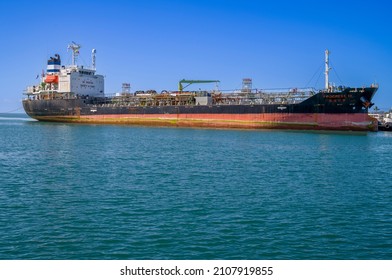What happened to that oiler depends on a good many things. The first is how the ship was ballasted. If she was running light, that is not carrying a full load of oil, I'd expect the ship to be down by the stern and drawing less water forward.
That's an example of what I mean. That tanker is riding higher at the bow than stern due to not having a full load of oil. That means it's drawing more water aft.
Second, it depends on what the ship was doing when it hit whatever it hit. Turning? Going ahead? Going astern?
Then there's what it hit.
As for the aftermath, it appears the crew didn't take the flooding that occurred as seriously as they should have.
Also, the ship definitely wasn't "torpedoed."



